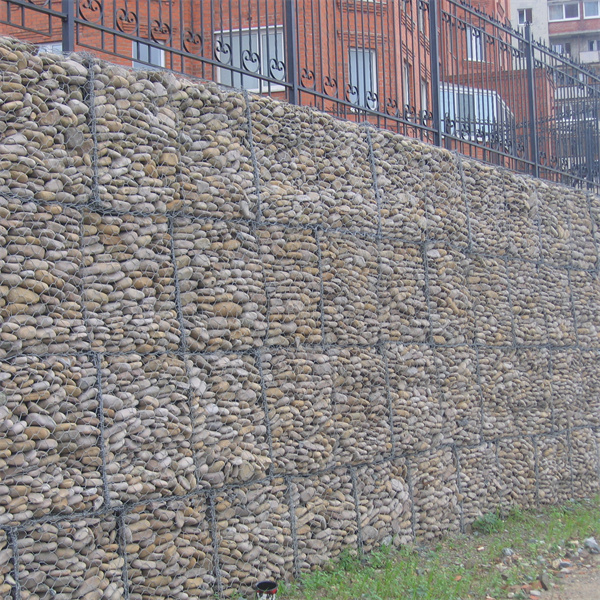dec . 11, 2024 11:20 Back to list
gabion fence construction manufacturers
Gabion Fence Construction A Growing Trend in Landscaping and Structural Design
In recent years, the construction industry has seen an innovative and environmentally friendly trend emerging in the form of gabion fences. These structures, comprising cages filled with stones, rocks, or other materials, offer both aesthetic appeal and functional advantages. As more homeowners and builders seek sustainable solutions for landscaping and boundary definition, gabion fence construction is increasingly favored. This article explores the benefits of gabion fences, the construction process, and why partnering with gabion fence construction manufacturers is crucial for optimal results.
What Is a Gabion Fence?
Gabion fences are constructed using a series of wire mesh cages filled with various materials, predominantly local stones. The versatility of materials allows for creative customization, making it easy to blend with the natural environment. Unlike traditional fencing options, gabion fences provide a modern, robust aesthetic while being eco-friendly and cost-effective.
Benefits of Gabion Fences
1. Durability and Strength Gabion fences are renowned for their durability. The heavy stones and welded wire mesh create a strong structure that can withstand harsh weather conditions, including strong winds and heavy rainfall. This resilience translates to reduced maintenance costs and increased longevity.
2. Environmental Advantages Given their construction materials, gabion fences often utilize locally sourced stones, which minimizes transportation emissions and helps reduce the carbon footprint. Additionally, they can enhance biodiversity, as plants and wildlife can thrive in and around the gaps of the fencing.
3. Versatile Design Options Gabion fences can be designed to fit various styles and requirements. They can serve as decorative elements, garden borders, or strong privacy barriers. With customizable shapes, sizes, and fill materials, the possibilities are nearly endless. Incorporating plants into gabions is also possible, creating living fences that further enhance the landscape.
gabion fence construction manufacturers

4. Cost-Effectiveness In comparison to traditional fencing materials, gabion cages filled with locally sourced rocks often come at a lower cost, especially when combining with DIY construction. They require minimal additional materials and labor, allowing for a practical and budget-friendly solution.
The Construction Process
The construction of a gabion fence typically involves several key steps. First, plans should be laid out with careful measurements of the required length, height, and the type of finish desired. Once designs are finalized, the construction begins with the installation of the foundation.
The cages are usually coated with weather-resistant materials to prevent rust and corrosion. After assembling the cage frames, they are filled with selected stones. Proper filling technique ensures stability and aesthetic appeal. It is advisable to leave spaces for drainage to avoid water accumulation and erosion.
Once the cages are filled, they are placed and secured in their designated locations. It is important to work with experienced gabion fence construction manufacturers to obtain high-quality materials and expert advice. These manufacturers can assist in choosing the right gauge wire and filling option, ensuring that your gabion fence is not only durable but also visually appealing.
Conclusion
Gabion fence construction is becoming an increasingly popular option among homeowners and architects looking for strategic yet stylish solutions for landscaping and boundary delineation. The advantages of durability, cost-effectiveness, and environmental benefits make gabion fences an attractive choice. Working with trusted gabion fence construction manufacturers can ensure high-quality results that enhance both the beauty and functionality of outdoor spaces. Whether for residential or commercial projects, gabion fences offer a unique blend of practicality and aesthetics that can redefine boundaries in modern design.
-
Why PVC Coated Gabion Mattress Is the Best Solution for Long-Term Erosion Control
NewsMay.23,2025
-
Gabion Wire Mesh: The Reinforced Solution for Modern Construction and Landscape Design
NewsMay.23,2025
-
Gabion Wall: The Flexible, Seismic-Resistant Solution for Modern Landscaping and Construction
NewsMay.23,2025
-
Gabion Wall Solutions: The Durable, Decorative, and Affordable Choice for Every Landscape
NewsMay.23,2025
-
Gabion Basket: The Durable and Flexible Alternative to Traditional Retaining Walls
NewsMay.23,2025
-
Gabion Basket: The Proven Solution for Slope Stability and Flood Control
NewsMay.23,2025
-
Versatility of Chain Link Fence Gabion
NewsMay.13,2025






